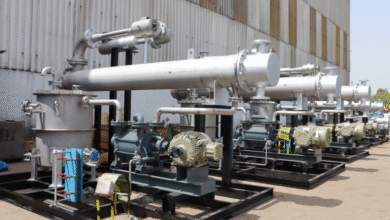Automation Testing: Building a Scalable Test Suite

The ever-increasing demands to achieve greater efficiency, improved quality application, and the need for faster feedback loops are paramount. This is where a testing suite is required that can tackle and solve these evergrowing demands easily, and the need for automation testing kicks in.
However building a scalable test suite demands mindful planning, thoughtful implementation, and refinement throughout the whole development cycle. In this article, we will delve into some basic principles, strategies, and some of the best practices that can be implemented to build a scalable automation test suite.
What is automation testing?
Automation testing can be defined as the process of writing test scripts with the help of automated tools and frameworks and running tests on software. With Automation, testing time is efficiently saved, unlike manual testing which is very time-consuming. Automation testing has made it easier for testers and developers to create test scripts without the need for human interference and hence also minimizes the risk of bugs and errors. It also provides a high ROI.
Understanding Scalability in Automation Testing
Automation testing has become a fundamental approach in the modern dynamic of application development workflows. It can be defined as the process of application testing with the help of automation tools that enable testers to attain prewritten test scripts, compare test results, and also produce results before it is released for production on a software application.
Scalability in automation testing can be defined as the ability of a testing suite to handle increasing variations, complexities, and volume that occur in applications over time without hampering the quality and efficiency of the test. The scalable test can be easily maintained, has flexibility, and is also open to adapting to changes in software requirements and environments in a seamless manner.
Benefits of automation testing
Automation testing comes with tremendous benefits that play a huge role in significantly enhancing the overall quality of the application.
Improved test coverage
Automation testing provides improved test coverage allowing testers to carry testing across a varying range of scenarios ranging from regression testing to boundary cases, and many more.
Faster feedback loops
It also provides a faster feedback loop as compared to manual testing which means tests can be executed faster and feedback is given immediately in case of code changes.
Fix bugs quickly
Developers can fix and solve issues more quickly and thus save the cost and effort required for fixing bugs. These tests are reusable and can run across different environments. They are consistent as they can be carried out across a variety of platforms, browsers, and devices. The chances of human errors are also minimized, unlike manual testing. This enhances the reliability and accuracy of the testing suite.
Cost efficiency and parallel test execution
Automation testing also plays an impactful role in saving cost, time, and resources, which promotes faster delivery of results. Automation testing also allows parallel execution of tests. Most importantly it is highly scalable, which is very essential if complex requirements are put forth and large-scale applications are to be tested.
Integration with CI/CD pipelines
Contributes to Continuous Integration and Delivery (CI/CD) as it can seamlessly integrate with CI/CD pipelines. This integration enables automated testing of every changed code and also ensures the software updates are tested comprehensively. Automation testing easily coordinates with agile practices and facilitates DevOps too. As it promotes an environment for continuous testing, seamless integration, and deployment.
Also embraces a friendly environment between the development teams and operation teams which promotes collaboration and faster replications.
Enhanced productivity
As automated testing can promptly handle repetitive and time-consuming test scenarios, it boosts developers’ productivity as they can focus more on coding and implementing new features. Hence the overall productivity is maximized and also enables teams to deliver software that satisfies both functional and non-functional demands in a consistent way.
Key aspects of a scalable testing suite
If a testing suite is scalable it comprises distinct components that are-
Modularity- The first is modularity which means that the testing suite is capable of breaking down tests into smaller, reusable modules, which helps in enhancing the maintainability of the suite and also enables quicker and easier updates as the application continues to evolve.
Parametrization- The second property should be parametrization which means efficiently using distinct parameters for data inputs and configurations. This will help in minimizing the redundancy and promote testing across various scenarios.
Abstraction- also plays a crucial role as it promotes the reusability of test scripts by abstracting common functionalities and test logic into libraries and also helps in simplifying the maintenance making the testing process easier.
Parallel execution- The most important quality amongst all is the ability to carry on parallel execution of tests which means to run multiple tests simultaneously on various distinct environments and devices. This helps in accelerating the testing cycle which in turn improves the overall efficiency of the testing process.
Monitoring and analysis- Regular monitoring and analysis are also critical when it comes to a scalable testing suite. Testers can implement a thorough reporting strategy, which will help in providing visibility into test results, and also aid in identifying trends and areas needing improvement.
Best practices for maintaining scalable test suites
Conduct tests frequently
When talking about automation testing it becomes important to conduct tests as frequently as possible as it enables testers to meet the quality demands in all aspects. Even though this practice demands the right automation tool and setup, implementing this will help in performing several test execution cycles rather than fewer ones.
Also when dealing with large test suites, parallel testing can be performed which makes the testing cycles short and promotes running of a large number of tests simultaneously.
Staying updated with the ongoing trends
It becomes important for maintaining a scalable test suite that the developers must engage in a continuous learning loop. They must also stay updated with the ongoing industry trends, and the advancements in the automation tools, and learn about best practices by actively participating in webinars, conferences, and community forums.
Define test metrics
Define test metrics means the time taken in executing the test, and test coverage rate, and identify the rate for detecting defects so that the effectiveness of the automation efforts is ensured regularly.
Ensure a correct testing environment
Another aspect that should be kept in mind is to make sure that the testing environment is correct. It means that the test is carried out in a reliable and consistent
environment. An ideal environment plays a critical role in ensuring a scalable automation testing suite. Also, put forward beneficial strategies that will enable testers to efficiently manage testing data and also look after the testing dependencies.
Ensure Continuous Integration and Continuous Testing
Integrating the automated test scripts into a continuous integration (CI) pipeline will promote a continuous testing environment in every phase of the development lifecycle. Issues can be detected in the early phase of the development cycle if automation takes place by triggering code changes.
Continuous testing contributes to and promotes agile development strategies which help in pacing up the feedback loops and thus developers can easily pitch defects and faults.
Find a suitable automation testing tool
Modern applications demand a scalable automation testing suite. But finding the correct automation testing tool is no joke but it should also be considered that not all tools can fulfill the prescribed needs. The hunt for the right automation testing tool is time-consuming but worth it if developers want to execute smooth execution of tests. LambdaTest is one such automation testing platform that fulfills all these criteria and has a significant impact in delivering enhanced quality applications.
LambdaTest is an AI-powered test orchestration and execution platform that empowers testers with a unified environment for accelerating both mobile and web-based applications by running both manual and automated tests across scales. The platform also enables developers to carry on both real-time and automation testing over 3000 environments, real mobile devices, and browsers online. All of this outshines LambdaTest in the testing industry when it comes to scalable and trustworthy suites.
LambdaTest’s parallel execution of tests allows testers to run tests at a large scale simultaneously, and improve the scope and coverage. Risk management strategies are also very well equipped at LambdaTest, providing virtual and real device testing developed and managed by a team of renowned experts.
LambdaTest showers its own set of significant benefits but when it is coupled with the combined power of open-source automation testing frameworks like Selenium, and Python a well-known programming language, it showers massive advantages in amplifying the application development workflows with efficiency, scalability, and reliability.
So when the power of Selenium Python is brought together it will not only fulfill the modern demands of application development but also empower teams to set up robust automation test suites which will not only accelerate testing cycles but also aid in intensifying the overall quality of the application.
Find out what to automate
The very important step to begin with the automation testing process is to find out what should be automated. Automating very little or very much can negatively hamper the process and have terrible effects on the testing suite.
Documentation and collaboration
regular documentation for test cases, frameworks, automation processes, and test scripts should be maintained properly. It includes the purpose, expected outcomes, or any particular configurations. This will help in facilitating transparency, and a shared knowledge transfer environment which becomes very effective when aiming for a successful and scalable testing suite. A powerful and effective collaboration between developers, testers, and other stakeholders also becomes very important for getting fruitful outcomes.
Monitor and analyze test results
Regularly analyzing and monitoring test results can help in keeping an eye on the test execution process. It also helps in identifying the trends, patterns, and potential areas which demand improvement. Also, this will promote refined test scripts which are continuously monitored and checked and thus the overall scalability of the automation testing approach is also achieved.
As covered already it is now clear that building a scalable automation test suite requires a correct and strategic approach, investing in the right tools and frameworks, and following best practices throughout the development cycle to ensure more reliable robust quality testing results.
Conclusion
Automation testing stands out as a core and necessary constituent in the modern application development era and plays a notable role in enhancing the overall quality, and reliability of the application and also speeding up its delivery process to a great extent. Significant improvement in application quality is also visible.
Adopting automation testing will not only facilitate the release cycles but also escalate the overall quality of the application and enhance efficiency, which in turn will help in achieving modern digital demands easily.




